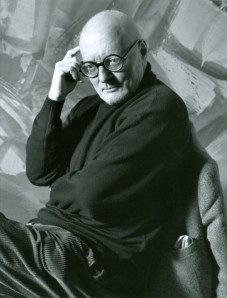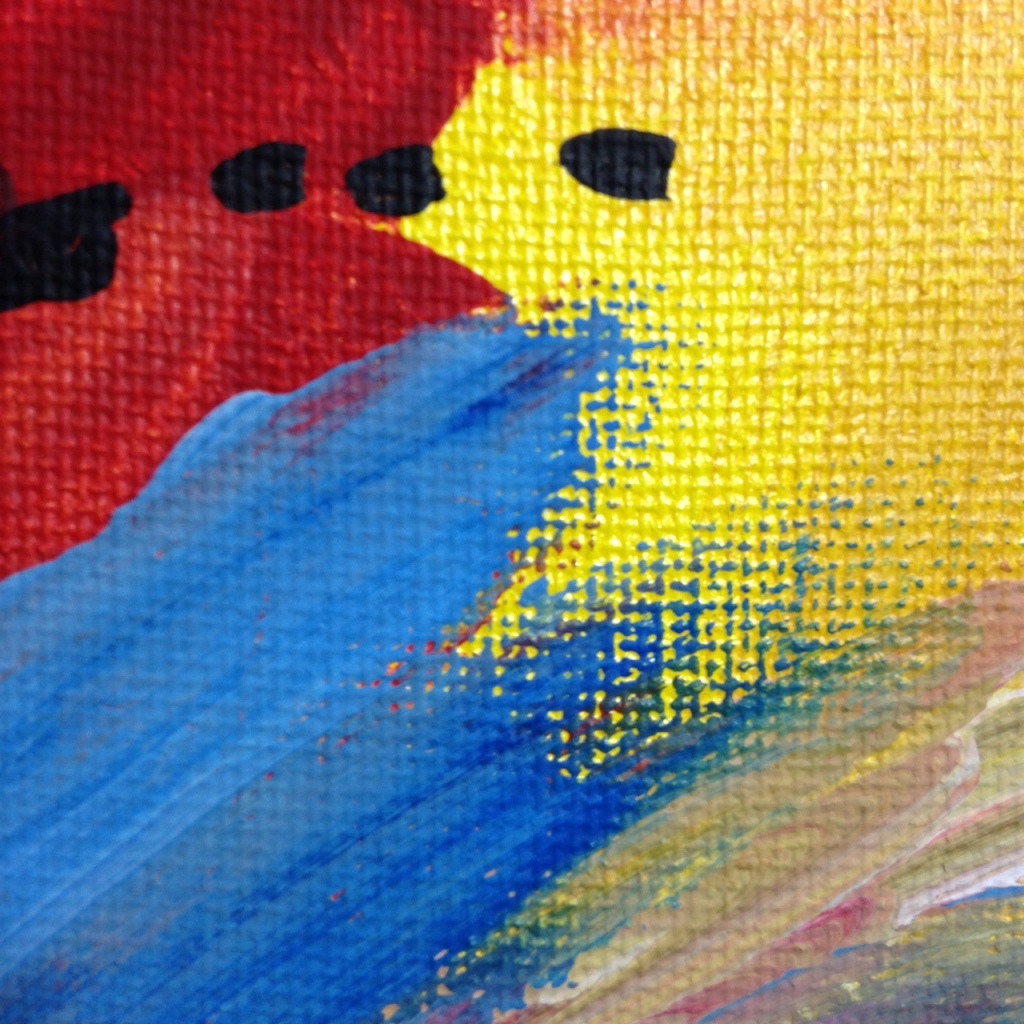It’s Day 269 and my busy week is wrapping up…I had a very nice time painting today’s piece. I feel like I haven’t done an abstract piece quite like this one in a while. There’s something very freeing about these kind of paintings. Join me in honoring Josef Mikl today!


Josef Mikl (August 8, 1929 – March 29, 2008) was an Austrian abstract painter of the Informal style.
Born in Vienna, he received his first training at the Graphische Lehr- und Versuchsanstalt, studying at the prominent Viennese academy from 1949 to 1956 under Josef Dobrovský. Collaborating with Friedensreich Hundertwasser at the Vienna Art Club, Mikl later was a member of the Galerie St. Stephan group. In 1968 Mikl, well known in Austria, represented his home country at the 34th Biennale in Venice.
Classified as an Informal and Modernist artist, Mikl himself despised his artwork being placed under a specific label, calling it “an insult” in an undated interview. He worked in oil, pastels and water colors, as well as sculptures and drawings that either stood alone or served as illustrations in a book or decorations in a church. Mikl is best known for renovating the Redoutensaal in Vienna’s Imperial Palace after it was destroyed in a 1992 fire. The hall once served as a venue for the first performance of Ludwig van Beethoven’s 8th Symphony as well as a summit between U.S. President John F. Kennedy and Soviet leader Nikita S. Krushchev and was reopened in 1997 with vibrant reds and yellows depicting notable themes and figures of Austrian literature, all of Mikl’s design.
Josef Mikl died of cancer on March 29, 2008. His funeral was held on April 3 though his death was not announced until the next day, in

accordance with Mikl’s wishes. Survivors include his wife, Brigitte Bruckner, and their 20-year-old daughter Anna Mikl.
Biography above is from wikipedia.
Below is from his obituary in The Guardian.
The painter Josef Mikl, who has died from cancer at the age of 78, was one of the most distinguished abstract artists of his generation. Though relatively little known in Britain, in his native Austria he received many honours, including a commission to decorate the state room known as the Redoutensaal, in Vienna’s Hofburg Palace, after its destruction by fire in 1992.

As well as its impressive size and vibrant fields of colour, the hall’s painted ceiling includes 34 verses by the early 20th-century author Karl Kraus, handwritten by Mikl on such a small scale that they are invisible to the spectator below. Public art and personal expression have rarely been so deftly combined.
Mikl was born in Vienna, where he started his training at the end of the second world war. After three years at the Graphische Lehr- und Versuchsanstalt (Vienna Training and Research Institute of Graphic Arts), in 1949 he began studying under Josef Dobrowsky, who had recently been appointed to the Academy of Fine Arts, the institution in which Mikl was himself to become a professor 20 years later. Dobrowsky’s vivid landscapes and genre paintings had a significant effect after the cultural sterility of the Nazi era. However, together with his fellow academy student Friedensreich Hundertwasser, Mikl helped to open Austria to more radical foreign influences, especially the expressive abstraction of French art informal.
Even more important was Mikl’s relationship with Markus Prachensky, Arnulf Rainer and Wolfgang Hollegha. In 1956 these abstract painters joined the circle around the extraordinary Monsignor Otto Mauer, a liberal Catholic intellectual who set up a gallery, next to St Stephen’s Cathedral in Vienna, at which Mikl frequently exhibited in the late 1950s and 60s.
His rising reputation led to some monumental commissions, for example to design a stained-glass window in 1959 for the Peace Church

in Hiroshima. During this period he was also invited to prestigious international shows, representing Austria at the 34th Venice Biennale in 1968, and twice participating in the documenta exhibition in Kassel.
Mikl’s output was certainly varied, ranging from oils, pastels and watercolours to sculpture and book illustrations. The clearly defined, almost mechanistic forms of his youth gave way to more lyrical images in which the human figure was often hinted at through sensuous washes of colour.
The influence from action painting can hardly be denied: like other artists, most famously Jackson Pollock, Mikl sometimes laid his canvases on the floor in order to work. The scale of his projects also increased, as in his 300-square-metres decoration for a chapel at the St Virgil educational centre in Salzburg in 1975-76. However, he was still capable of producing small, subtle pieces: lithographs and other prints, for example, filled with delicate shifts of tone and linear patterns.

Moreover, Mikl was keen to distance himself from abstract expressionism’s more extravagant aesthetic and intellectual claims. Above all, he did not wish to be seen as representing contemporary anguish or any other spirit of his age. He dismissed the concept of zeitgeist as “decorative”: as he put it, “it works with the masses as the most powerful force, with sentimentality, foolish content, false form, bad technique, the pseudo-philosophy of the art trade. The word zeitgeist is an insult.” Mikl saw himself rather as the Thomas Edison of painting, continually making new discoveries, regardless of the preconceptions of the day. This intellectual dynamism is most clearly reflected in the Redoutensaal canvases, which were completed in 1997. While the ceiling and some of the wall paintings are responses to modern works by Kraus and Elias Canetti, other images in the room refer to the 19th-century dramatists Johann Nestroy and Ferdinand Raimund.
Nestroy’s sharp satire, often using comic songs and wordplay, could be expressed only obliquely through abstract art, and yet the contrast with the reconstructed room’s pompous architecture is highly effective. It is hard to imagine a more fitting adornment to a chamber that hosts such magnificent functions as the council of EU ministers and the Viennese coffee-makers’ ball.
Mikl himself was given numerous awards, from the Austrian Decoration for Science and Art (1990) to the City of Vienna’s Ring of Honour (2004). He is survived by his wife, the artist Brigitte Bruckner, who was over 30 years his junior, and his daughter Anna. The news of his death was not made public, according to his wishes, until shortly after his funeral.
· Josef Mikl, artist, born August 8 1929; died March 29 2008
I hope you enjoy my piece for today! I will see you tomorrow on Day 270!
Best,
Linda

Linda Cleary 2014
Acrylic on Canvas

Rot und Blau Tanzen- Tribute to Josef Mikl
Linda Cleary 2014
Acrylic on Canvas

Rot und Blau Tanzen- Tribute to Josef Mikl
Linda Cleary 2014
Acrylic on Canvas

Rot und Blau Tanzen- Tribute to Josef Mikl
Linda Cleary 2014
Acrylic on Canvas

Rot und Blau Tanzen- Tribute to Josef Mikl
Linda Cleary 2014
Acrylic on Canvas
